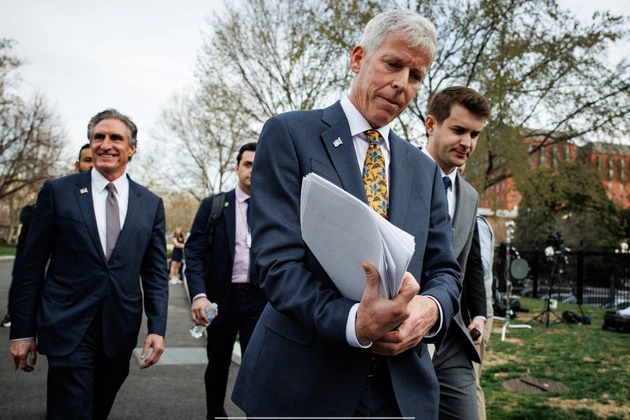
The U.S. oil industry finds itself at a crossroads, grappling with the lowest crude prices in years, soaring steel costs, and the specter of an economic downturn that threatens to dampen consumer demand. This confluence of factors has left oil executives on edge, testing their resolve amidst mounting pressure.
The Price Plunge and Policy Perils
Oil prices have plummeted by nearly 15 percent since April 2, reaching their lowest point since April 2021. This sharp decline has not only strained the patience of industry leaders but also raised concerns about the viability of President Trump’s vision for “energy dominance.”
Despite the industry’s struggles with increased steel tariffs and trade tensions, there remains a cautious optimism regarding Trump’s trade policies. The hope lingers that negotiations and tax cuts could alleviate the financial strain on oil companies.
Trade Gambles and Market Realities
Trump’s tariff maneuvers have put the notion of energy dominance to the test, forcing oil companies to navigate a delicate balance between trade posturing and market stability. The industry’s future hinges on finding this equilibrium to sustain its competitive edge.
While Trump’s rhetoric around energy dominance has been a central theme of his administration, the industry faces mounting uncertainties as recession fears loom large. This climate of uncertainty has prompted a reevaluation of investment strategies and production forecasts.
Policy Pushback and Economic Uncertainty
Efforts to seek waivers on steel imports and mitigate the impact of tariffs have met resistance, with some lawmakers advocating a tough stance on trade issues. The resulting standoff underscores the complexities of balancing trade protectionism with industry demands.
The industry’s resilience in the face of market volatility contrasts sharply with Wall Street’s apprehensions about the long-term effects of tariffs. As share prices fluctuate and production growth projections waver, the industry grapples with the implications of ongoing trade disputes.
Forecasting Challenges and Market Reactions
Analysts warn of a slowdown in U.S. oil production growth due to prevailing market conditions. The lingering impact of tariffs on consumer spending and production costs adds further uncertainty to the industry’s outlook, prompting caution among investors.
The evolving landscape of global oil production, coupled with weakening prices, presents a formidable challenge for U.S. oil producers. The need to adapt to changing market dynamics while maintaining profitability remains a critical priority for industry stakeholders.
Adapting to Uncertain Terrain
Amidst the economic turbulence and policy uncertainties, the U.S. oil industry faces a pivotal moment in its history. Navigating the complexities of trade policies, market dynamics, and geopolitical shifts will require a concerted effort to chart a course that ensures long-term sustainability.
As industry players grapple with the ramifications of trade conflicts and economic fluctuations, the need for strategic foresight and adaptability has never been more pronounced. The road ahead may be fraught with challenges, but it also presents opportunities for innovation and resilience.











